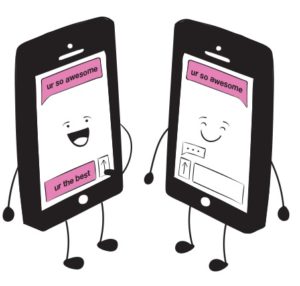On February 28th – Pink Shirt Day – Stand Up
What is bullying?
Bullying is a form of aggression where there is a power imbalance; the person doing the bullying has power over the person being victimized. In additional to any physical trauma incurred, bullying can result in serious emotional problems, including anxiety, low self-esteem, or depression.
Why do we have anti bullying day?
On February 28, 2018 we encourage everyone to wear something pink to show that we are all working together to prevent bullying in our schools, in our communities and online. Pink Shirt Day comes from two Nova Scotia high school students, who decided to take a stand against bullying in their own school
CYBERBULLYING is using online and mobile technology to harm other people, in deliberate, repeated & hostile manner
FOUR STEPS TO STOP CYBERBULLYING
- STOP: Don’t try to reason with or talk to someone who is cyberbullying you.
- BLOCK: Use the block sender technology to prevent the person from contacting you again.
- TALK: Tell a trusted adult, inform your school, use a help line and/or report it to police.
- SAVE: Save any instant messages or emails you receive from the person bullying you, or capture any comments or images that have been posted online.
Bullying isn’t just a child’s issue; it’s a school and community issue, and must be addressed with a school and community solution.
Everyone has a role to play in promoting positive mental health and wellness, supporting students, positive social behaviour and preventing incidents like bullying. There needs to be an integrated approach to prevent, address and/or reduce bullying, by developing the right partnerships with schools, parents, community and police.
Students who feel safe and are free to develop in healthy ways are far less likely to be involved in inappropriate activities. Students who are learning and thriving take pride in themselves, their school, their accomplishments and the accomplishments of those they are connected to.
Setting a positive school climate and culture will help set the tone for a child’s learning. To do this, staff, parents and community must model behaviour and attitudes that are positive, respectful, fair and caring. This means creating a school climate that is equitable, inclusive, diverse, tolerant, respectful and accepting. By doing this, we will move towards reaching our goal of making B.C.’s schools the most inclusive in the world.







